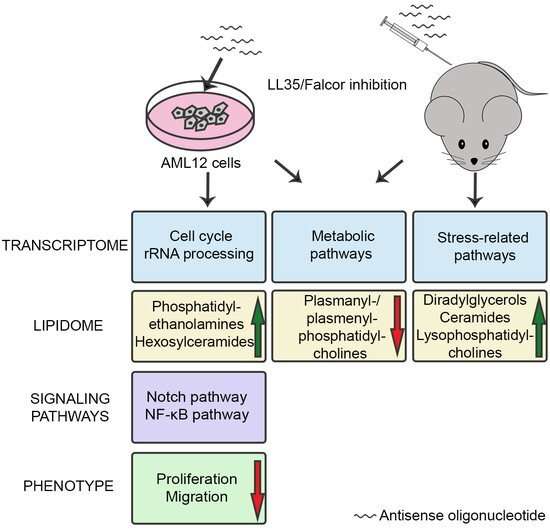Scientists discover how glucose and lipid metabolism is regulated by non-coding RNA

A group of Skoltech researchers under Dr. Olga Sergeeva's supervision studied the functions of a long non-coding RNA, which is "read" from the genome, but does not carry the information about protein structure. In experiments on animals and cell lines, scientists have shown that long non-coding RNA LL35 regulates the metabolism of glucose and lipids. Moreover, its depletion suppresses liver cells' ability to migrate and divide normally. These results make this long non-coding RNA a potential target for diagnosis and therapy. The details of the study are described in detail in an article published in the journal Biomedicines.
Although most of the mammalian genome is transcribed—"rewritten" from DNA to RNA—not all of the resulting transcripts are further used for protein synthesis. Such RNA sequences are called non-coding, and sequences longer than 200 nucleotides are called long non-coding RNA (lncRNA). In the last ten years, scientists have become especially interested in lncRNA as the potential markers of diseases and regulators of various biological processes.
Scientists from the Skoltech Center for Cellular and Molecular Biology have long been searching for new targets for RNA therapy and exploring the functions of lncRNAs. In particular, they were interested in the human lncRNA DEANR1/linc00261, which had previously been shown to be associated with various types of cancer. However, the functional role of this lncRNA in the organism is not yet fully understood. It is impossible to conduct such a study on humans, so the scientists turned to animal models, namely mice.
"In cell lines that are artificially grown in vitro, many processes proceed differently than in the body. In tissues, cells of different types interact with each other, exchange signals, and as a result, the effect of some external influences can diverge completely. Often the results obtained in the cells study cannot be reproduced at the organism level. Therefore, scientists are looking for analogs of the studied targets in model organisms in order to prove that the role of a certain gene is retained and it can indeed be used for therapy," says Olga Sergeeva, Skoltech senior researcher and head of the study.
However, finding a functional analog of lncRNA in another organism is not a trivial task. For protein-coding RNAs, it is sufficient to determine the similarity of the nucleotide sequence, which is not the case for lncRNA, and it is often very difficult to find and confirm a functional analog. In the study, the scientists investigated a potential functional analog of the human lncRNA DEANR1/linc00261 in the murine genome, Falcor/LL35. Experiments have shown that in murine cells LL35 behaves similarly, but at the level of the organism it is predominantly present in the liver and lungs. In addition, liver cancer or liver regeneration, leads to reduction in LL35 RNA expression level.
"It usually turns out that with pathological processes—for example, inflammation or cancer—the level of many biomarkers increases. But our lncRNA of interest, LL35, decreases in pathology, and this underlines the fact that it is important in the normal state. Potentially, this result can be used in biomarker panels to characterize the disease or its stage. In this case, the presence of changes with different signs will increase the reliability of the result," continues Olga.
To explore the functions of LL35 in normal conditions, scientists administered antisense oligonucleotides, small RNA sequences complementary to LL35, to mice and cell culture. Its interaction with LL35 decreased the level of lncRNA of interest. Comparing the level of gene expression, proteins and metabolites before and after the introduction of antisense RNA, the scientists found out in which molecular processes LL35 is involved.
In addition to the known functions of DEANR1/linc00261, scientists have found that LL35 is involved in the most important physiological processes: glycolysis, the process of glucose oxidation, and lipid synthesis. So far, a very small amount of lncRNA has been shown to be associated with lipids. At the next stage, the researchers plan to test whether the detected functions are characteristic for the human lncRNA DEANR1/linc00261. Scientists hope that administration of antisense oligonucleotides to this lncRNA can be used to treat diabetes, obesity, non-alcoholic fatty liver disease, and others.
More information: Evgeniya Shcherbinina et al, Murine Falcor/LL35 lncRNA Contributes to Glucose and Lipid Metabolism In Vitro and In Vivo, Biomedicines (2022). DOI: 10.3390/biomedicines10061397
Provided by Skolkovo Institute of Science and Technology

















